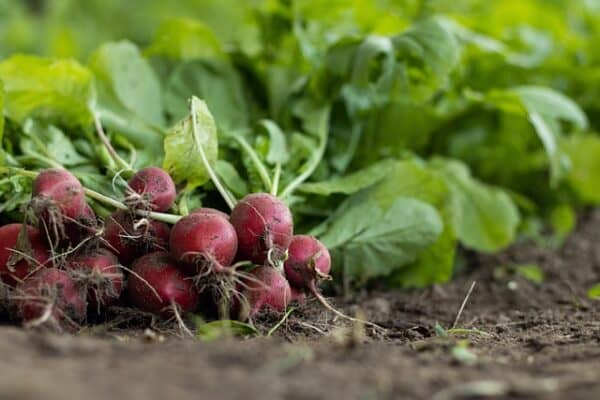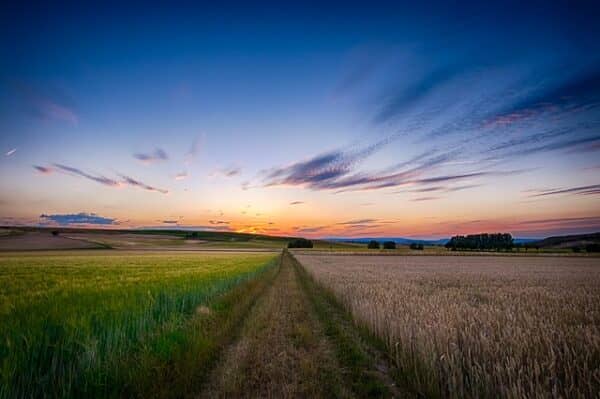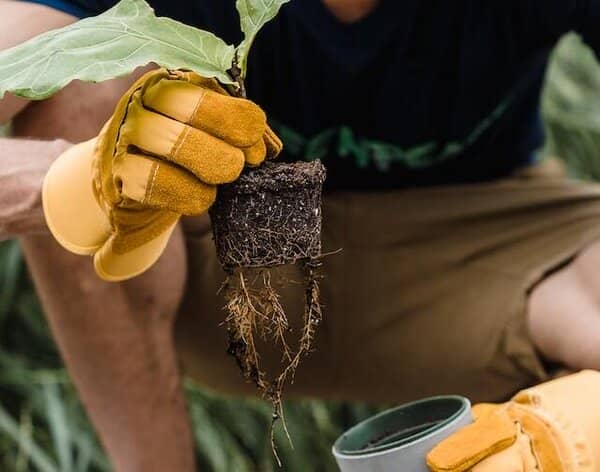If you’re looking to start a vegetable garden, you might be wondering which plants grow the fastest from seed. Fast-growing vegetables are a great option for gardeners who don’t have a lot of time to wait for their crops to mature. Fortunately, there are many delicious and nutritious vegetables that grow quickly and easily from seed.
In this article, we’ll take a look at the top 10 fastest-growing vegetables you can grow from seed. These vegetables are perfect for impatient gardeners who want to enjoy fresh, homegrown produce as soon as possible. Whether you’re a beginner or an experienced gardener, these fast-growing vegetables are sure to be a hit in your garden.
From radishes to zucchini, there are many different types of vegetables that can be grown quickly and easily from seed. In the following sections, we’ll provide you with all the information you need to get started. We’ll cover everything from planting and care tips to harvesting and storage, so you can enjoy a bountiful harvest in no time.
1. Top 10 fastest growing vegetables from seed
1.1. Arugula
Arugula, more commonly known as Rocket, is a fast-growing leafy green that is easy to grow from seed. It has a slightly peppery taste that makes it a great addition to salads or as a substitute for basil pesto. Arugula can be harvested in as little as 20 days after planting, making it one of the fastest-growing vegetables from seed.

1.2. Radishes
Radishes are another fast-growing vegetable that can be harvested in as little as 25 days after planting. They come in a variety of colors and flavors, from spicy to mild, and can be eaten raw or cooked. Radishes are a great addition to salads or as a snack with dip.
1.3. Spinach
Spinach is a nutrient-rich leafy green that is easy to grow from seed. It can be harvested in as little as 30 days after planting and can be eaten raw or cooked. Spinach is a great source of vitamins and minerals, making it a healthy addition to any meal.
1.4. Lettuce
Lettuce is a popular salad vegetable that is fast and easy to grow from seed. Some varieties can be harvested in as little as 30 days after planting, while others take six to eight weeks. Lettuce comes in a variety of colors and textures, making it a great addition to any salad.
1.5. Baby carrots
Baby carrots are a smaller, sweeter version of traditional carrots. They can be grown from seed and harvested in as little as 30 days after planting. Baby carrots are a great snack or addition to salads and can be eaten raw or cooked.
1.6. Cucumbers

Cucumbers are a refreshing and crunchy vegetable that can be grown from seed. They can be harvested in as little as 50 days after planting and are a great addition to salads or as a snack with dip. Cucumbers can also be pickled for a tasty treat.
1.7. Beets
Beets are a nutritious root vegetable that can be grown from seed. They can be harvested in as little as 50 days after planting and come in a variety of colors, from deep red to golden yellow. Beets can be eaten raw or cooked and are a great source of vitamins and minerals.
1.8. Green beans
Green beans are a versatile vegetable that can be grown from seed. They can be harvested in as little as 50 days after planting and can be eaten raw or cooked. Green beans are a great source of fiber and protein, making them a healthy addition to any meal.
1.9. Peas
Peas are a sweet and crunchy vegetable that can be grown from seed. Peas can be harvested in as little as 60 days after planting and are a great addition to salads or as a side dish. Peas come in a variety of colours and can be eaten raw or cooked.
1.10. Turnips
Turnips are a root vegetable that can be grown from seed. They can be harvested in as little as 60 days after planting and come in a variety of colours, from white to purple. Turnips can be eaten raw or cooked and are a great source of vitamins and minerals.

2. Factors affecting seed germination and growth
2.1. Temperature
The temperature of the soil is a crucial factor in seed germination. Most vegetable seeds require a soil temperature of at least 50°F (10°C) to germinate. However, different types of vegetables have different temperature requirements. For example, warm-season vegetables like tomatoes and peppers require a higher soil temperature of around 70°F (21°C) to germinate. On the other hand, cool-season vegetables like lettuce and spinach can germinate in cooler soil temperatures of around 40°F (4°C).
It is important to note that soil temperature can vary depending on the time of day, weather conditions, and location. To ensure optimal temperature for seed germination, use a soil thermometer to check the temperature of the soil before planting.
2.2. Soil quality
The quality of the soil is another important factor in seed germination and growth. The soil should have good drainage, be loose, and fertile. Seeds need oxygen to germinate, and if the soil is too compacted, it can prevent air from getting to the seeds. Additionally, if the soil is too wet or too dry, it can hinder seed germination and growth.
Before planting, prepare the soil by adding organic matter like compost or aged manure. This will improve soil structure and fertility, and help retain moisture in the soil.
2.3. Watering
Proper watering is essential for seed germination and growth. Seeds need to be kept moist but not waterlogged. Overwatering can cause seeds to rot, while underwatering can cause them to dry out and die.
After planting, water the soil gently and evenly, making sure not to disturb the seeds. Use a watering can or a gentle spray nozzle on a hose to avoid washing away the seeds. Once the seeds have germinated, continue to water regularly, but be careful not to overwater.
2.4. Light exposure
Light exposure is another important factor in seed germination and growth. Some seeds require light to germinate, while others require darkness. For example, lettuce seeds require light to germinate, while carrot seeds require darkness.
When planting seeds, read the seed packet instructions to determine the light requirements for the specific type of vegetable. If seeds require light, do not cover them with soil. If seeds require darkness, cover them with a thin layer of soil or a light-proof covering like burlap.
3. Tips for growing vegetables from seed
3.1 Choosing the right seeds
Choosing the right seeds is crucial for a successful vegetable garden. Look for seeds that are labeled as “fast-growing” or “early-maturing” to ensure a quick harvest. It’s also important to choose seeds that are appropriate for your climate and growing conditions. Consider factors such as the amount of sunlight your garden receives and the type of soil you have.
3.2 Preparing the soil
Preparing the soil is another important step in growing vegetables from seed. Start by removing any weeds or debris from the area where you plan to plant. Then, loosen the soil to a depth of at least 6 inches and amend it with compost or other organic matter to improve drainage and nutrient content.
3.3 Sowing the seeds
When sowing seeds, follow the instructions on the seed packet for depth and spacing. As a general rule, most seeds should be planted at a depth of two to three times their diameter. Make sure to water the soil thoroughly after sowing to ensure good seed-to-soil contact and germination.
3.4 Watering and fertilizing
Watering and fertilizing are important factors in the growth and development of vegetable plants. Water the soil regularly to keep it moist but not waterlogged. Apply a balanced fertilizer according to the instructions on the package to provide the plants with the necessary nutrients for growth.
3.5 Thin out seedlings
Once the seedlings have emerged, it’s important to thin them out to prevent plant overcrowding. This will allow the remaining plants to grow stronger and healthier. Use scissors or garden shears to cut the weaker seedlings at soil level, leaving only the strongest ones.
3.6 Transplanting seedlings
When the seedlings have grown to a suitable size, they can be transplanted into their final growing location. Make sure to choose a spot with appropriate sunlight and soil conditions. Dig a hole slightly larger than the root ball of the seedling and gently place it in the hole. Fill in the hole with soil and water thoroughly.
Summary
No matter which of these top 10 you decide to grow is up to you, they all grow in a short period of time – get out and get something planted today!



